L-Acoustics K3i Professional Audio System Offers Chapman Music Hall at Tulsa Performing Arts Center Great Sound and Fantastic Flexibility L-Acoustics K3i Professional Audio System Offers Chapman Music Hall at Tulsa Per...
Specified by Schuler Shook and installed by Brown Note Productions, K3i’s frequency range covers more of the spectrum with fewer enclosures
TULSA, Oklahoma – October 2025 – Designed by architect Minoru Yamasaki, Chapman Music Hall, the largest of four venues at Oklahoma’s Tulsa Performing Arts Center (TPAC), has showcased the performances of many world-renowned talents. The space has hosted the likes of Tony Bennett, Norah Jones, Michael Bublé, Kelly Clarkson, Mikhail Baryshnikov, Steve Martin, and Itzhak Perlman, as well as touring Broadway musicals, such as The Lion King, Wicked, and The Phantom of the Opera. From orchestras, opera, ballet, and theater to meetings, lectures, and films, the space has been an epicenter of culture for nearly 50 years.
As part of TPAC’s larger facilities renovation, the 2,365-seat Chapman Music Hall was recently equipped with an L-Acoustics K3i-based sound system. The design specification was provided by consultancy Schuler Shook and integrated by Brown Note Productions, which adroitly performed the system retrofit with no disruption to the center’s intensive schedule of more than 500 annual events.
The new house sound system features a total of 114 loudspeakers. This includes main arrays of a dozen K3i per side, seven A15i flown as a center array, and four KS28 subs flown behind the center array in a cardioid configuration. A pair of X12 serve as orchestra pit side-fills, with two X15 HiQ as mezzanine corner-fills, and nine X4i as orchestra pit rail front-fills. More A Series enclosures are deployed for over-balcony and orchestra rear surround use, plus 53 X8 coaxials as under-balcony, front stage-lip, and surround-fills in the room, which features continental seating on the main floor and is segmented into orchestra, mezzanine, and balcony levels.
Additionally, an L-Acoustics P1 processor manages the system’s nine LA7.16i and one LA12X amplified controllers, along with a redundant Optocore, Milan-AVB, and Dante digital audio networks for system drive. Signals are mixed via a DiGiCo Quantum338 audio console at the FOH position, which is fitted with an Orange Box and DMI-AVB card, allowing it to communicate directly with the P1.
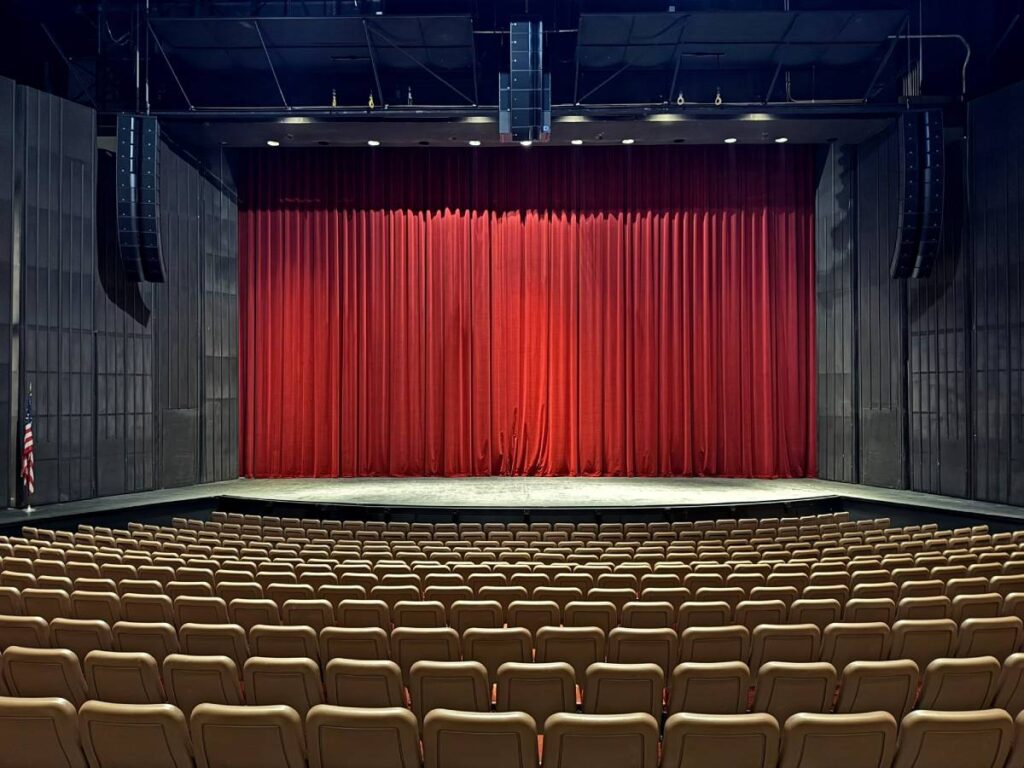
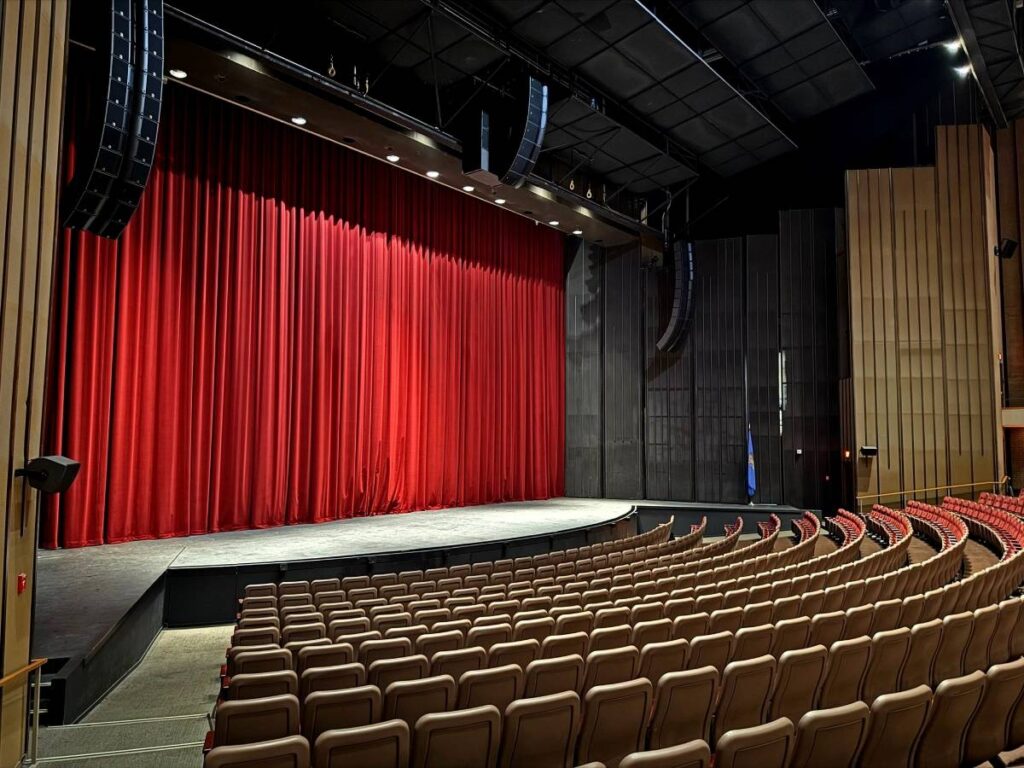
K3i: A Full-Range Performer
“Despite their compact size, the K3i enclosures offer full-range performance with an extended low end, which meant that we required fewer subwoofer cabinets,” explains Sten Severson, Project Audio Video Consultant at Schuler Shook. “We almost didn’t even need to add subs to complement the main arrays, but ultimately chose to specify only four KS28, which definitely gave us a cleaner overall system design. K3i really provides a lot of bang.”
He also compliments L-Acoustics technicians for their help in the design process, specifically calling out L-Acoustics Applications Team members Dave Salmon and Steele Beaty for their aid. Using L-Acoustics Soundvision modeling software, “They helped us get the modeling of the hall and of the speakers correct,” he says. “Our company’s specialty is theater planning, with my focus being AV, and L-Acoustics specializes in helping us achieve the best outcomes.”
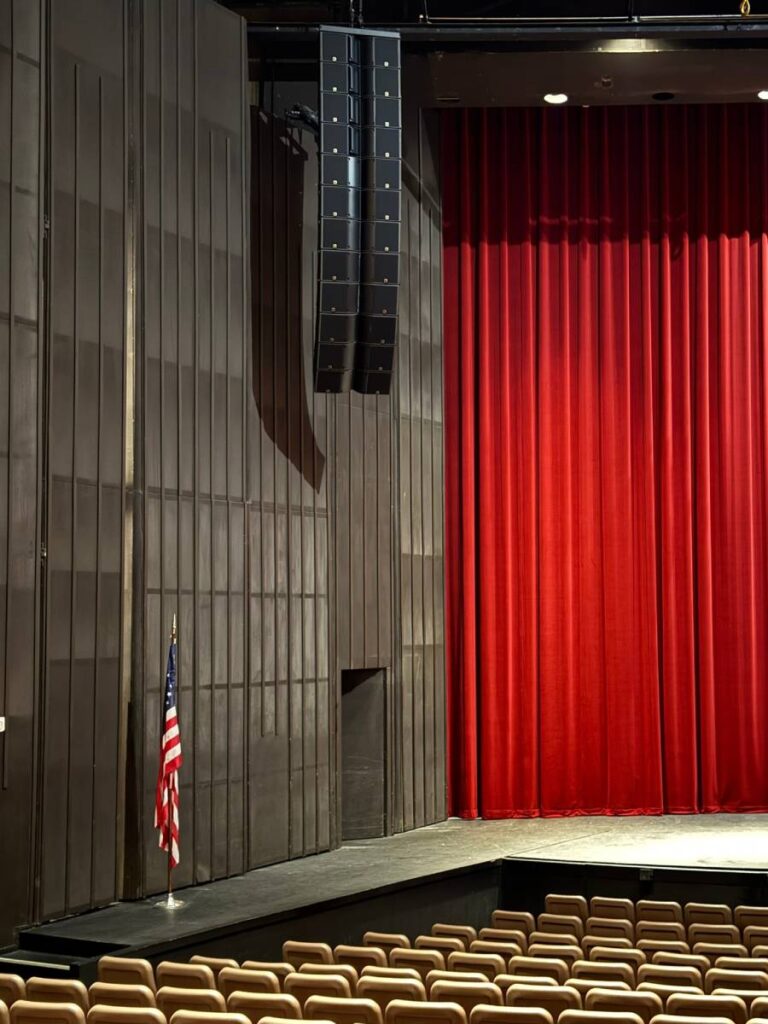
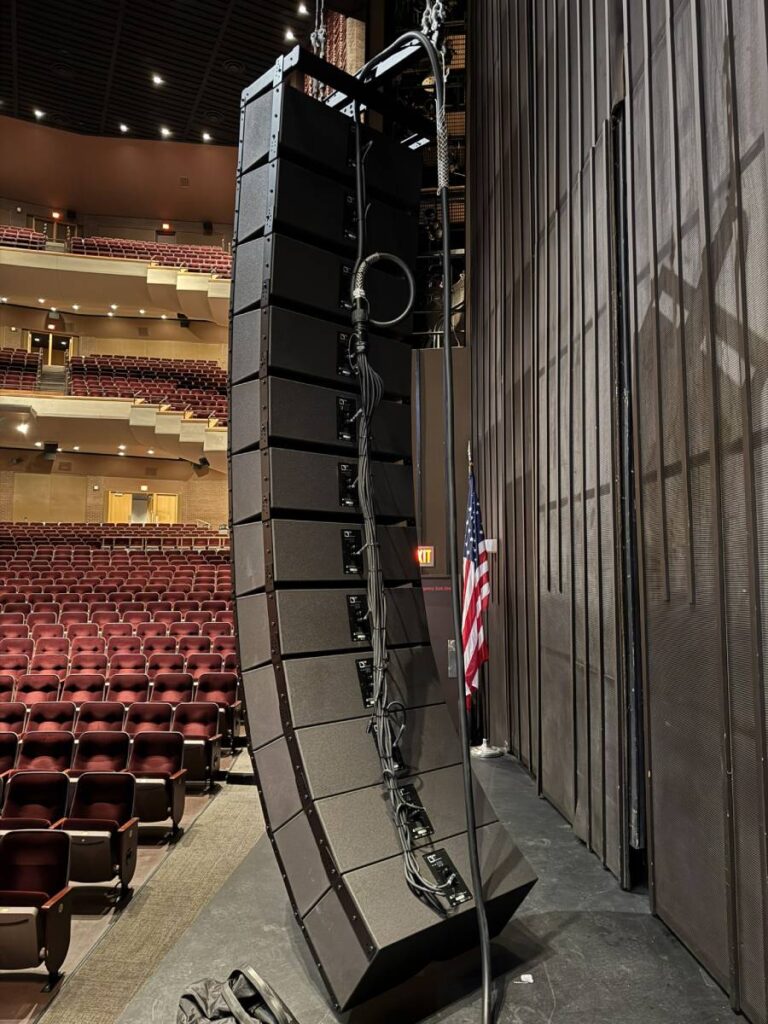
A Solution for Every Space
While the K3i enclosures, with their small form factor and wide frequency response, have proven to be the right choice for the venue, the system’s many other L-Acoustics components also offer their own unique advantages. For instance, the A15i and X8 models in the design provide a consistent sonic experience throughout the venue while providing the kind of surround experiences that theatrical productions are increasingly relying on.
“We’re leaning on quite a few fill speakers in the design,” says Brown Note Productions Director of Integration Zach Richards. “And one of the great things we like about the L-Acoustics line in general is being able to supplement the mains with enclosures that we know are going to be voiced similarly, and really resonate and align with what the main arrays are pushing out. More and more theatrical productions are coming in with shows in Q-Lab that have effects that need to happen in a specific part of the theater, such as the back left corner of the room, for instance. And so every level of the theater has a full surround experience, with all of the speakers already tuned for the venue, time-aligned, and on the Milan-AVB network.”
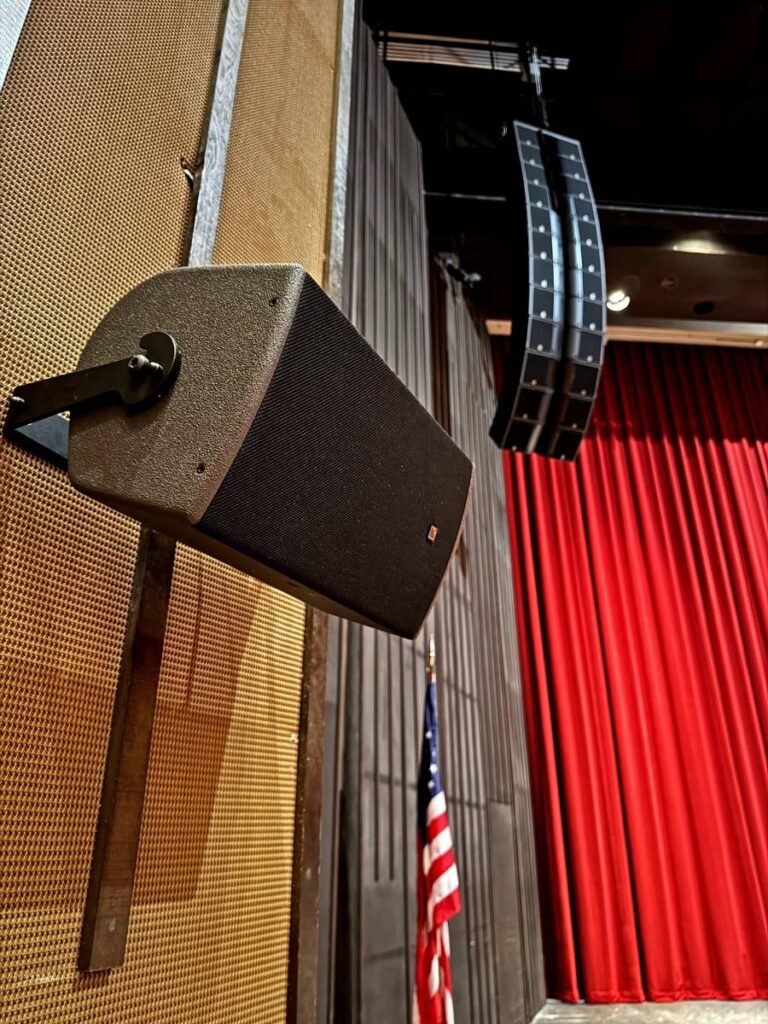
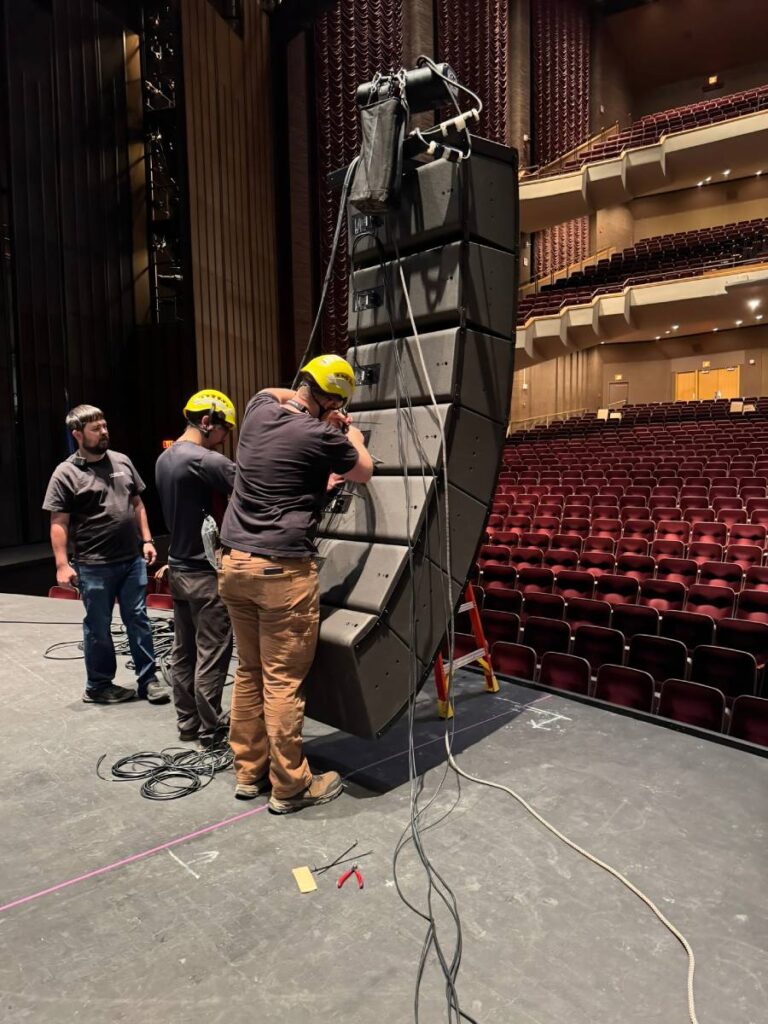
The Electronics Behind the Mechanics
Brown Note Project Manager Bruce Simmons points out several other key advantages: “The new LA7.16i amplified controllers made it very economical to deploy the Autofilter tool on all of the arrays,” he says, referring to the software feature available in the L-Acoustics Soundvision simulator that automatically generates FIR filtering parameters to achieve a more uniform and flat frequency response across different listening areas in a venue, and can also be used to electronically narrow the coverage. “There’s no paralleling of array cabinets, so it gave us the highest possible resolution that made the coverage in the vertical very, very consistent.”
Simmons also praises the L-Acoustics P1 processor for covering so many bases. He cites the Autoclimate tool within the LA Network Manager software that integrates real-time temperature and humidity data from the P1’s internal sensors to automatically adjust the system’s response to atmospheric conditions. “We can also connect measurement microphones to the P1 and do real-time RTA monitoring in the room while you’re in Network Manager, so you don’t have to run a separate Smaart rig,” he adds. “And it can also give us a single point of processing to be able to kill all the audio feeds in case of a fire alarm or life-safety situation. It has so many advantages.”
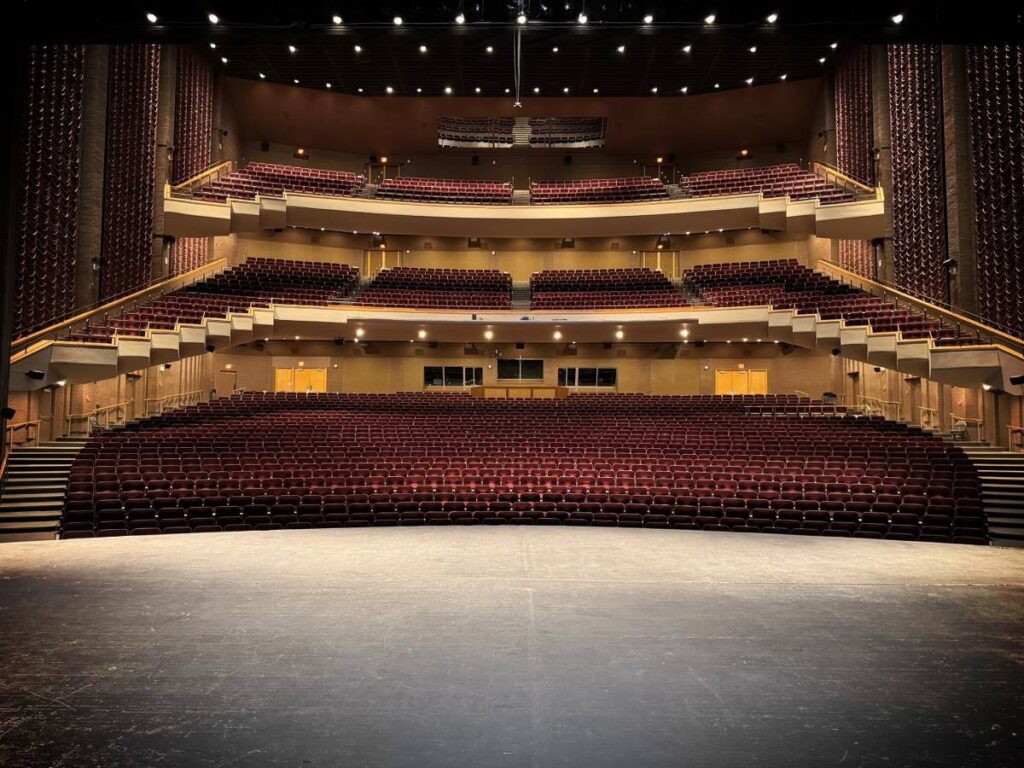
Maximum Mobility and Practicality
“The L-Acoustics system sounds fantastic, but one of the main goals was also to make it more flexible,” explains Severson. “The hall’s previous loudspeaker setup required a six-hour call and as many as six stagehands to take the system down so a touring rig could go in, if needed. This one is now motorized, so it can be taken out of the way by a single person, with their finger on a single button, in about 20 minutes.”
The previous rigging system required manual takedowns to accommodate Broadway tours, adding significant labor costs and logistical headaches, agrees TPAC Vice President of Operations Scott McLarty. “Now, thanks to the intelligent hoist system, we can fly the line arrays out of sight at the push of a button, freeing up space without compromising the aesthetic or acoustic integrity of the venue.”
Designed to accommodate everything from Broadway blockbusters and opera to rock concerts and lecture series, the hall’s new L-Acoustics sound system and its rigging ensures top-tier performance across all genres, as well as practical benefits. “It makes TPAC a more attractive and competitive venue on the touring circuit, since presenters no longer need to sub-rent additional systems,” says McLarty. “That saves touring productions thousands of dollars and saves us time in the space not having to re-rig and work around the rest of the systems. At the same time, it gives every audience member, no matter where they’re seated, the same high-quality experience. It’s a true representation of our ‘Arts for All’ mission. L-Acoustics is state-of-the-art sound delivering a state-of-the-art experience.
For more info on Tulsa Performing Arts Center’s Chapman Music Hall, visit www.tulsapac.com. Schuler Shook and Brown Note Productions can be found online at www.schulershook.com and www.brownnote.com.
Press release assets are found by clicking here.
Subscribe to Our Newsletter
Get the lastest news and find out about listening events.